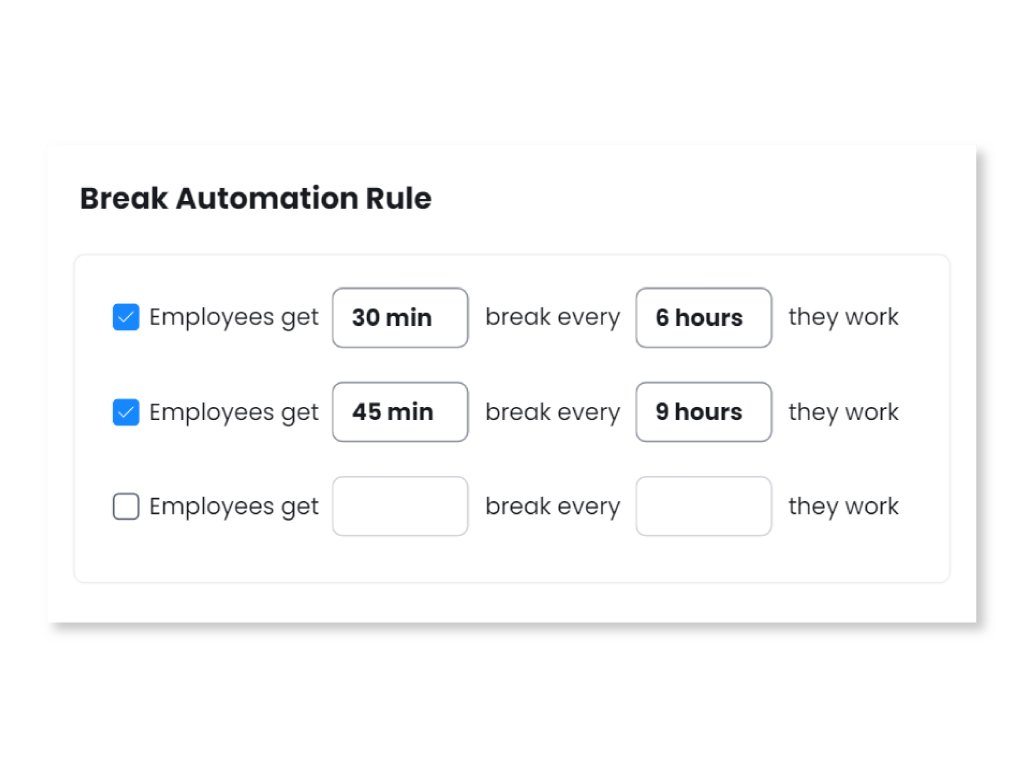How It Works:
Break Policies: Companies establish policies outlining when and for how long employees are entitled to take breaks during their shifts. These policies ensure compliance with labor laws and optimize productivity.
Recording Breaks: Employees record their breaks using various methods such as clocking in and out of break periods through digital timekeeping systems or mobile applications. This allows accurate tracking of break times.
Importance:
Compliance: Break management ensures that companies adhere to labor regulations regarding meal and rest breaks, preventing potential legal issues related to employee rights.
Productivity: Structured break management helps maintain productivity by ensuring that employees take necessary breaks, which can contribute to overall job satisfaction and performance.
Integration and Software Variants:
Break management solutions are commonly integrated into broader workforce management systems, enabling efficient scheduling, tracking, and reporting of break times. This integration streamlines administrative tasks and enhances operational efficiency.
Break management plays a crucial role in maintaining a healthy work environment by balancing employee well-being with operational needs, ensuring both compliance and productivity.


